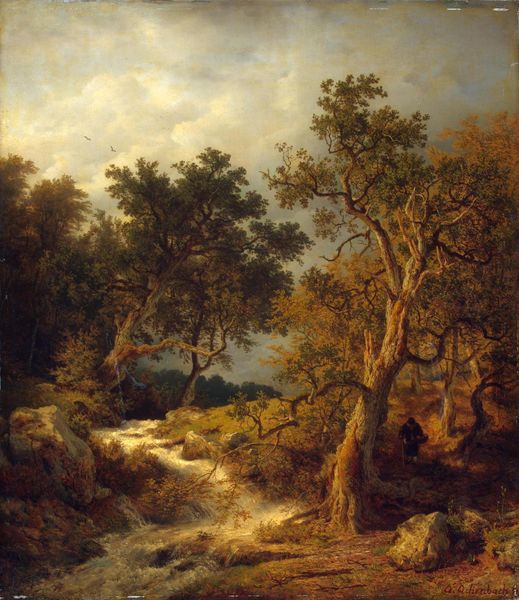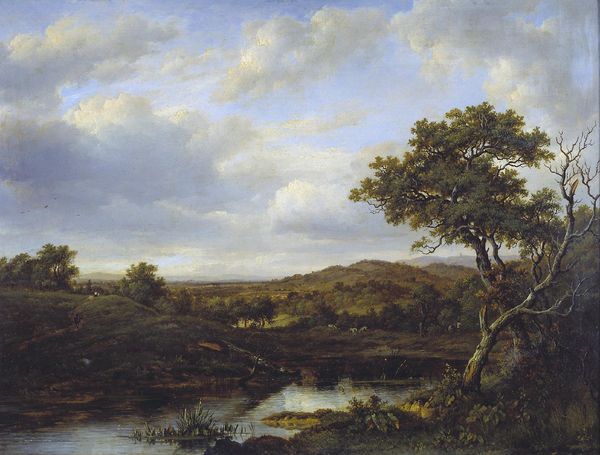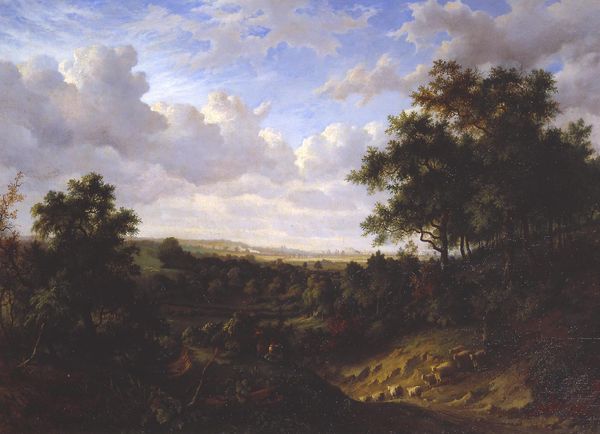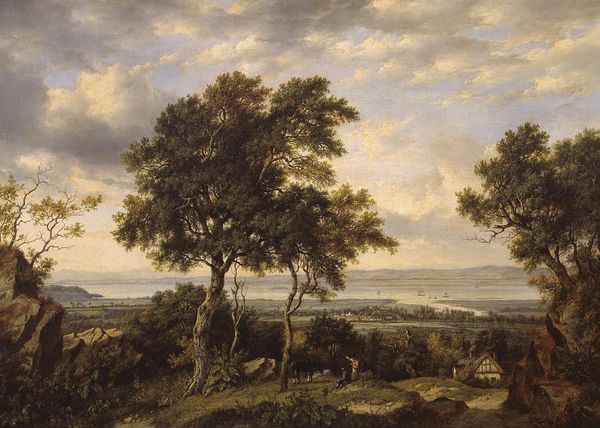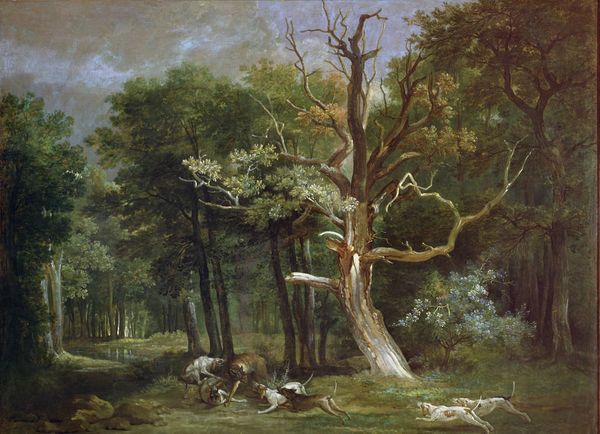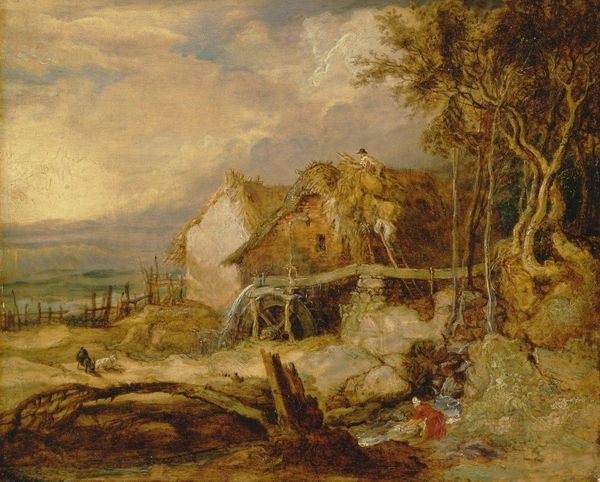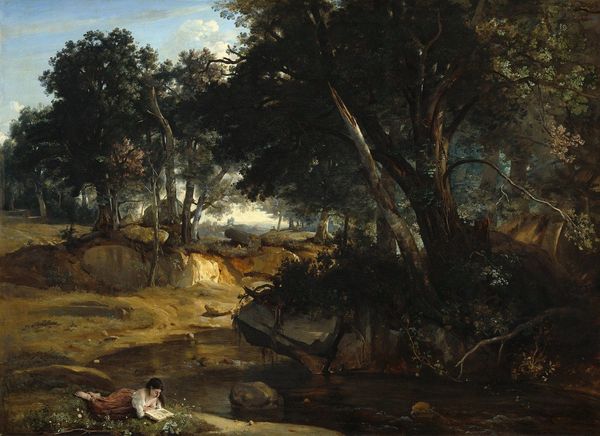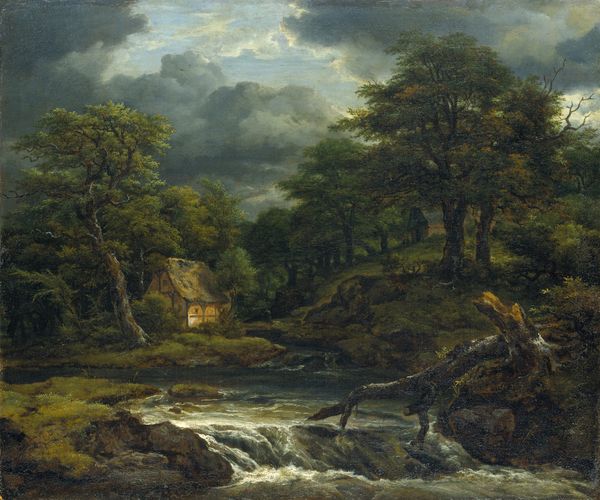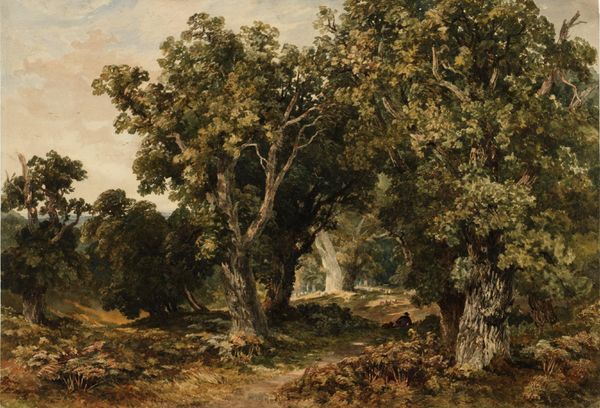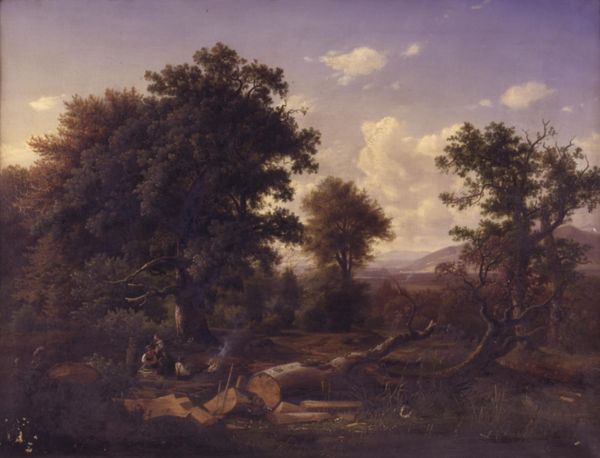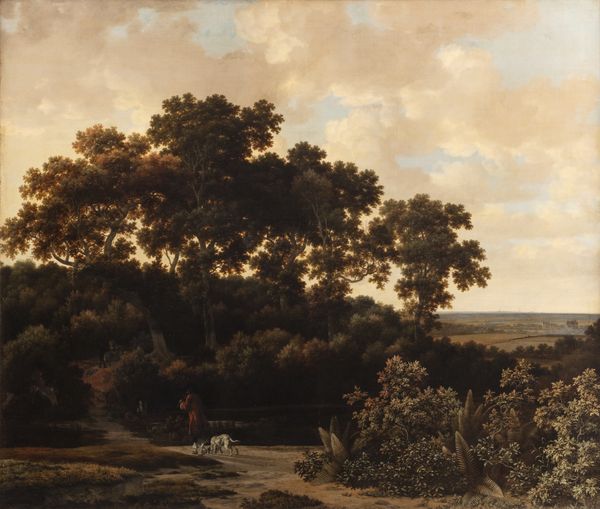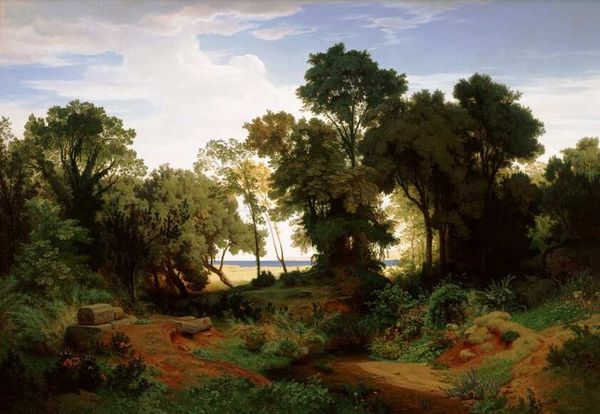
Dimensions: support: 302 x 406 mm
Copyright: CC-BY-NC-ND 4.0 DEED, Photo: Tate
Editor: Patrick Nasmyth's 'A Landscape (‘The Angler’s Nook’)' invites us into a peaceful scene, doesn't it? What strikes me is the subtle way he depicts nature's harmony, it's almost idealized. What do you see in this piece from a historical context? Curator: The idealization you observe is crucial. Nasmyth, working in the early 19th century, taps into a burgeoning romanticism, but filtered through a distinctly British lens. Consider the Enclosure Acts, which dramatically altered the landscape, privatizing common land. Editor: So, this idyllic scene is perhaps a reaction to those changes? Curator: Precisely. This image presents a comforting, ordered vision of nature, implicitly critiquing the social and environmental disruptions of its time. How does that reading shift your initial impressions? Editor: It makes me see the painting less as a simple landscape and more as a statement, a subtle protest almost. Thanks, that's incredibly insightful.
Comments
tate 8 months ago
⋮
http://www.tate.org.uk/art/artworks/nasmyth-a-landscape-the-anglers-nook-n00381
Join the conversation
Join millions of artists and users on Artera today and experience the ultimate creative platform.
tate 8 months ago
⋮
This picture, with its richly described rocks, water and foliage, dilapidated rural buildings and peaceful angler, fits into the aesthetic formula of the Picturesque. This ideal of textural variety and compositional order governed much landscape painting after the mid-eighteenth century. By the time this picture was painted the formula was beginning to look old-fashioned, compared to the innovations of artists such as Constable and Crome. Gallery label, September 2004
